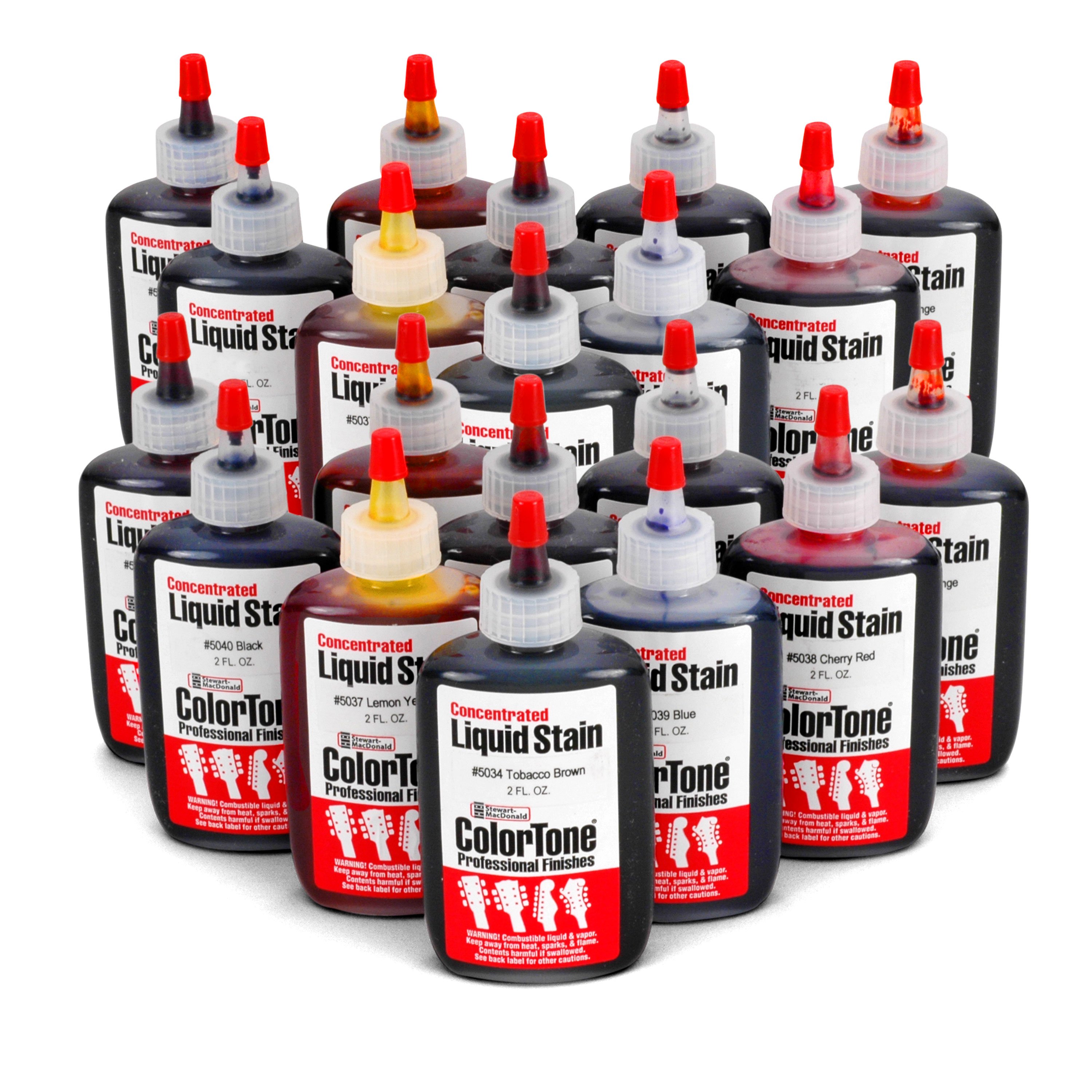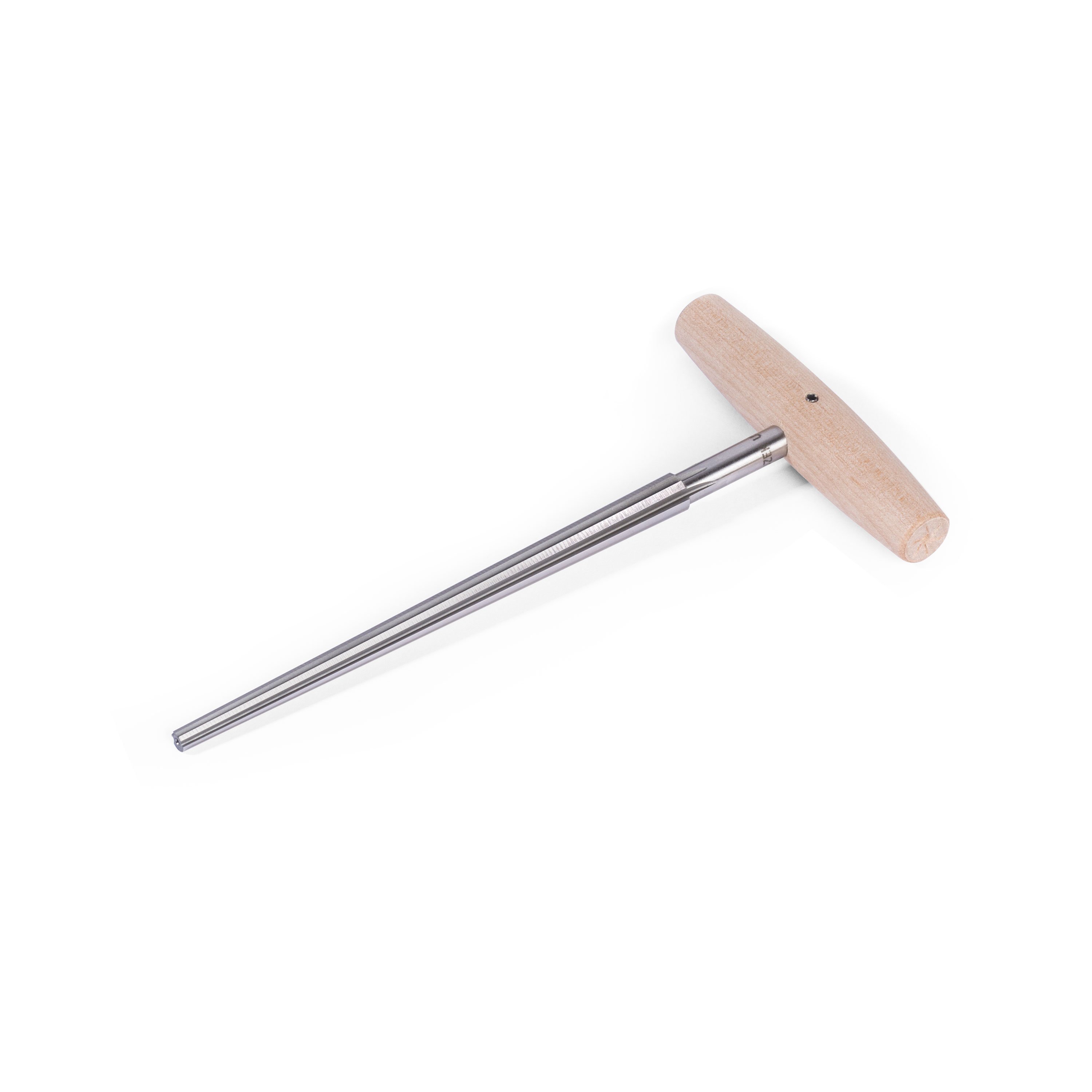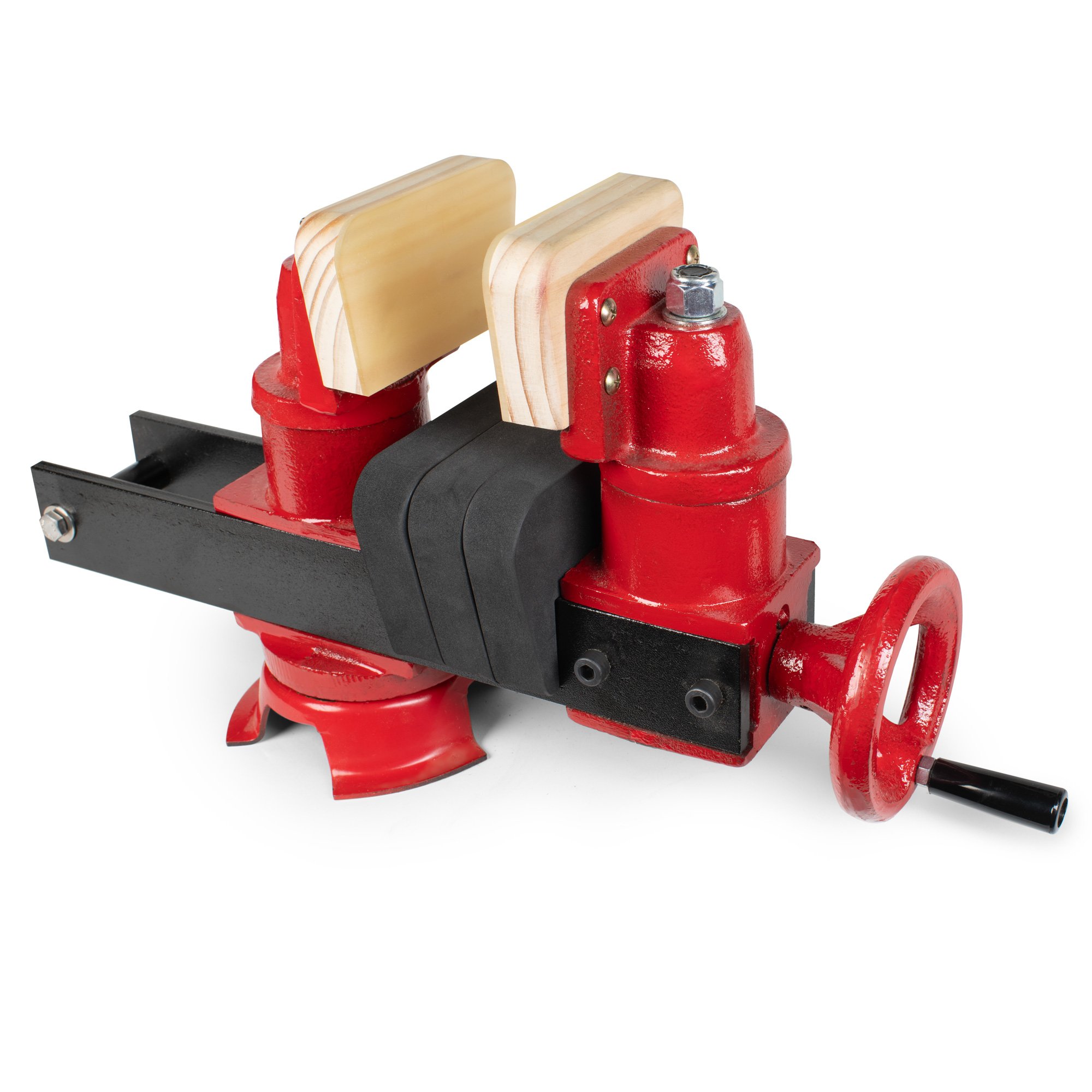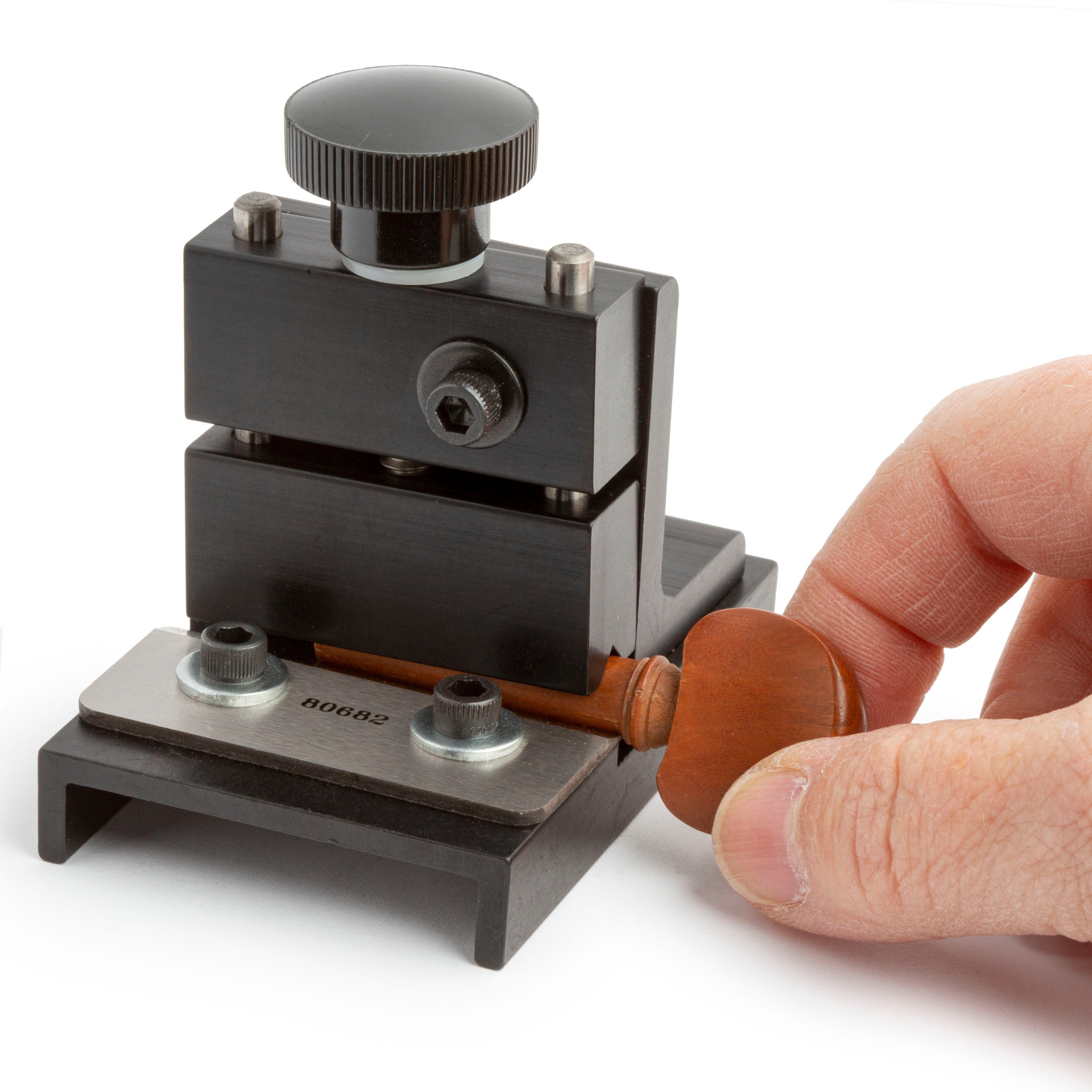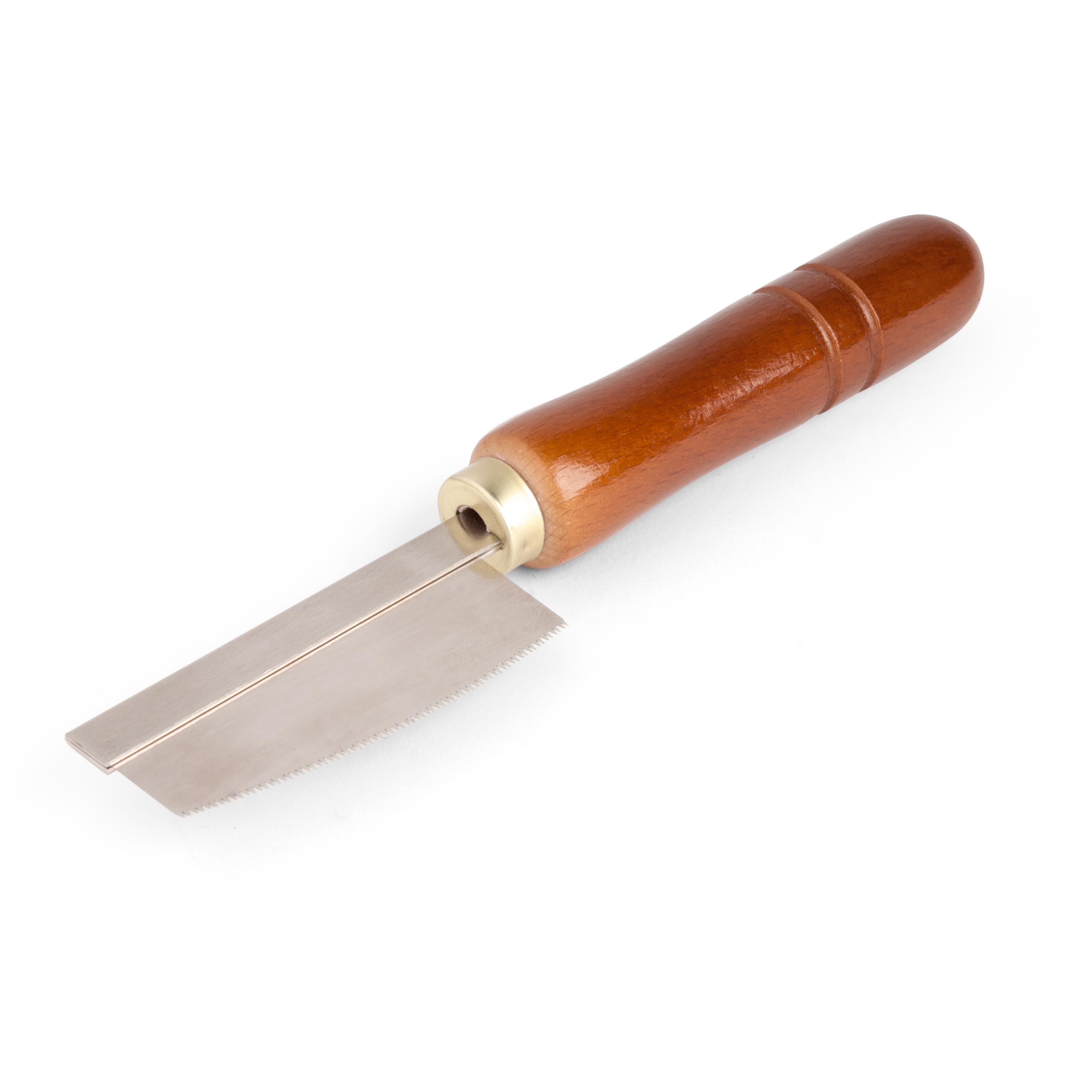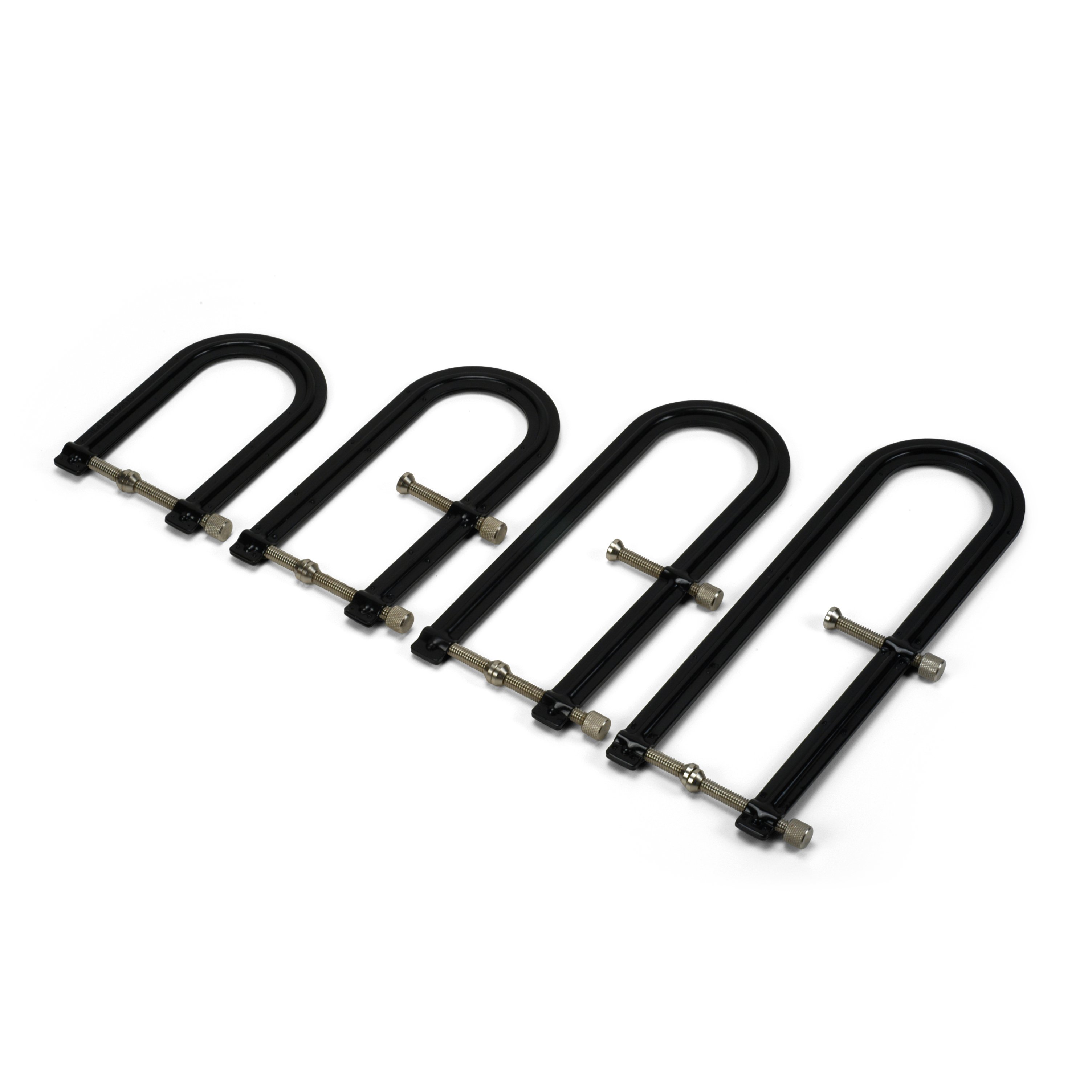YIKES! Using a reamer in an electric drill
Issue 243 May 21, 2015
This little parlor guitar was found in a trash can and Dan Erlewine is doing a quick fix on the bridge. The pin holes were entirely chewed up. Dan’s drilling them out with a peg hole reamer then plugging them with peg-shaped plugs of hardwood.
About the guitar in this video: There’s not much known about this little guitar. Dan calls it a “catalog” guitar because instruments like this were so common on catalog pages from the 1920s and 1930s.
- Strange black stain burned into the guitar top
- Turning a hand reamer into an oversize drill bit!
- Creating tapered plugs from a hardwood dowel
- Patching the bridge pin holes in order to re-drill them
Video Transcription
Dan Erlewine: [on screen text reads: Stewart-MacDonald - Trade Secrets!] This old guitar was probably made in the 1920s, and it was made in the US. [on screen text reads: Fixing Ruined Bridge Pin Holes] I call it a catalog guitar, or parlor guitar. In those old catalogs, you see tons of guitars like this. Spruce top, made out of Oak back inside. They weren't great guitars, but they were good student guitars. Now, 90 years later, my friend Ry Bernhan picked it up in a trash can, and he wants me to get it playing for him, because he plays in a jug band. My goal is, to get it to him before next Monday, when they're opening up at the Cider House. The troubles with this guitar is the bridge. This is a maple bridge, died black to look like Ebony, whatever the dye was, and whatever glue they used on it, etched into the Spruce, that actually burned it. I scraped glue off this for two hours.
Fixing ruined bridge pin holes
It was black, yucky glue. The bottom of the bridge was all chewed up. I put a piece of wood in front of the bridge pin slots to reinforce that, and the top had fallen off in the front of the saddle. If you look, you could see a little glue line, where I glue it on a piece of wood, dyed it black [on screen text reads: Colortone Black Stain], and then put a coat of Shellac on the whole thing. Before I can glue it on, I'm plugging these butchered up holes with hardwood dowels. There's a bridge played in the top of this guitar, the main brace. It's also acting as a top brace, and it goes from here to here, and it's that thick. Maybe 3/8", and about an 1 1/8". I think at the factory, when they drilled these holes, there was no backer board inside.
They chop, chop, chop. Punches out all the holes, then you string it up for 90 years, and you get what this is. A big job of patching. The bridge pin holes on this bridge, you might notice are drilled at quite an angle. That's straight up, and down, and they're at this angle. There's nothing wrong with that. A lot of guitars back in this area were made that way. For me, I don't want to plug it in an angle. I want to be able to get my plug straight up, and down, and get as much of that wood as possible for a good fit. To do that, I use a reamer [on screen text reads: peghole reamer], and something I like to do is, drive the pen out of the handle, and take the handle off, so I can use it in my drill. I get very vertical that way, and a lot of power, and I'll stay more concentric than twisting by hand.
Don't expect the handle comes off as easy as what I just did there. I'd already taken the handle off, and I put it back on for a demo. This one you'll see has some channel lock marks on it, because I had to refund this to get it off after I drove out the pen. [on screen text reads: Guitar Repair Vice] I start the holes with the little reamer at the angle of the bridge pins. While it's running, I stood it up vertical. That gives me a nice vertical, round hole. At one point, the reamer's too long, and it hits the back of the guitar. That's when I switched to the bigger reamer, and take over where the little reamer left off. [Dan holds the drill vertically placing the reamer in the small hole]
I made tapered plugs from a hardwood doll using a peg shaper [on screen text reads: Peg Shaper]. They'll be the same taper as the whole cup in the reamer [on screen text reads: Japanese Mini-Saw]. [Dan cuts the doll with the Japanese saw] I'm going to glue these in, and let them dry for at least five hours. It's high glue [on screen text reads: Soundhole Clamps]. Then, when I redraw these bridge pin holes, I'm going to use a backer board, and I'll have nice clean holes that'll keep this guitar running for another hundred years, and be ready for Ry on Monday night.


